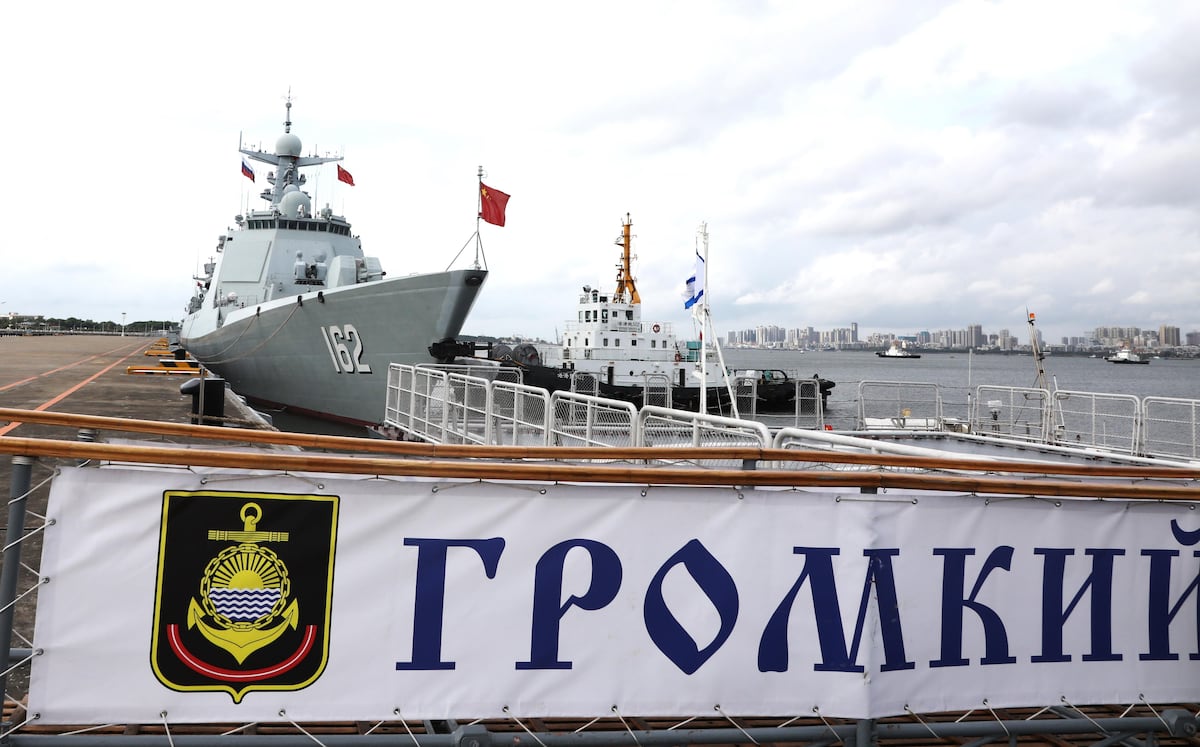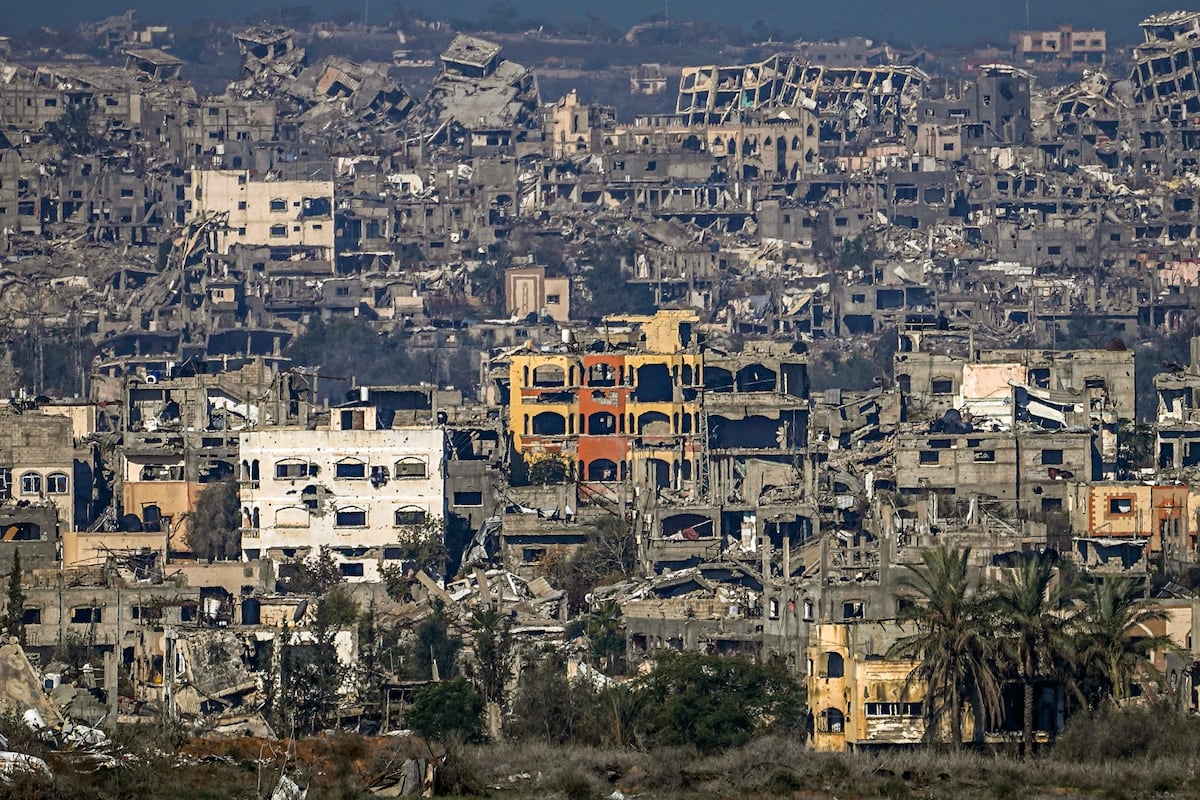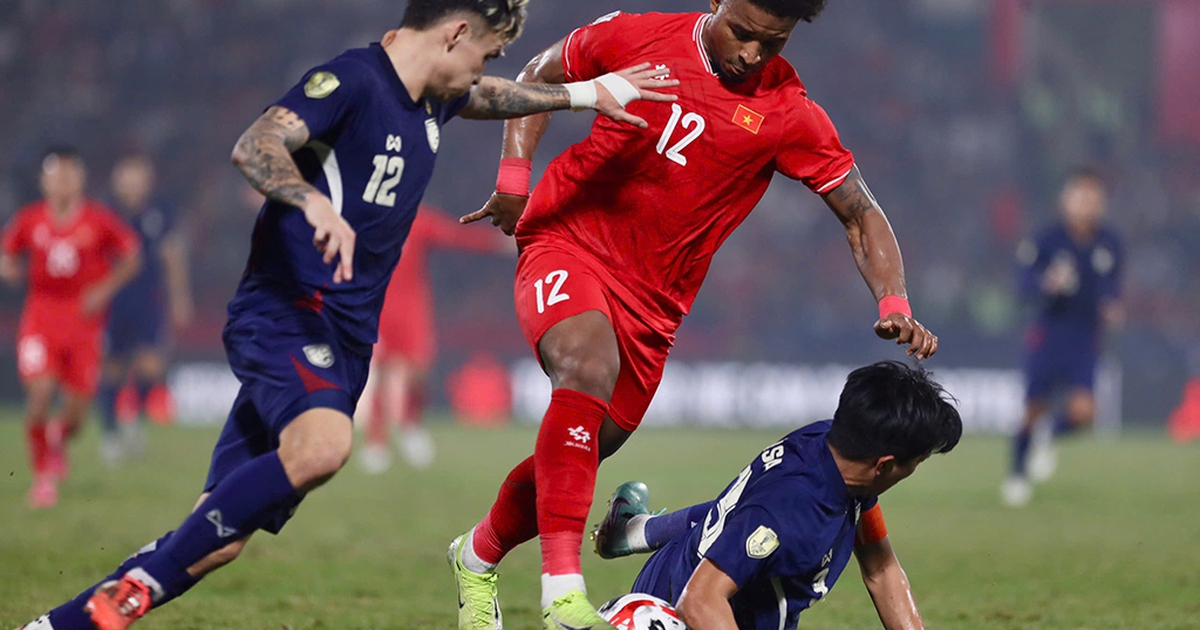China and Russia have this week put their intense military cooperation on display by deploying at least a dozen warships during two overlapping joint war games in the South China Sea, one of the flashpoints of global geopolitics. While the Chinese and Russian navies successfully concluded a joint naval patrol in the area on Tuesday, another maritime formation set sail on Monday to conduct a three-day live-fire war game, according to China’s official newspaper. Global TimesThe exercises are part of a political agenda between Moscow and Beijing, which are engaged in a deepening of their defence relations and come just a week after NATO denounced China’s role as a “decisive facilitator” of Russia’s war effort in its invasion of Ukraine.
The first of the exercises, the joint maritime patrol, has been carried out four times since 2021, making it almost “routine,” according to analyst opinions collected by the aforementioned media. The Chinese-Russian naval formation began the joint patrol in waters south of the South Korean island of Jeju, located in the East China Sea, between Japan and Shanghai; it went out to the open sea through the Osumi Strait and sailed south through the western Pacific before entering the South China Sea through the Balintang Channel, a passage between Taiwan and the Philippines. It involved a Chinese destroyer, a frigate and a replenishment ship and a Russian corvette, which trained boarding, search and capture operations, as well as helicopter cross-landing. “The sailors of both navies worked closely together, tacitly and efficiently, and completed the scheduled missions,” according to the report. Global Times.
The second of the maneuvers, called Joint Seahas been held several times since 2012. The 2024 edition officially kicked off on Sunday with an opening ceremony at the Zhanjiang naval port in Guangdong province (southern China), home to the headquarters of the People’s Liberation Army (PLA, the Chinese military) southern theatre command navy. In the training, which will last until mid-July, the seven-ship formation will carry out live-fire, reconnaissance and early warning, search and rescue, and air defence exercises. The Chinese side is providing a destroyer, two frigates and a supply ship, as well as helicopters and marines; the Russian side has sent two corvettes and a tanker.
The drills are intended to “demonstrate the determination and capabilities of both sides to jointly confront threats to maritime security” and to “further deepen the China-Russia comprehensive strategic partnership of coordination for the new era,” said Colonel Zhang Xiaogang, spokesman for the Chinese Ministry of Defense, last week. During a period of time “at least 10 Chinese and Russian warships [han estado] operating in two joint formations simultaneously in the region,” according to a Chinese military expert anonymously quoted by the same media.
In this area, through which about a third of the world’s maritime trade passes, China’s territorial aspirations clash with several neighboring countries. More than sparks have flown with the Philippines in recent times in clashes between ships of both countries. One of the most intense skirmishes took place on June 17, when Chinese coast guards intercepted and boarded with axes and knives a Philippine naval mission sent to resupply troops stationed on a disputed reef; there were several injuries on the Philippine side, including a sailor who lost a thumb. The United States maintains the obligation to defend the Philippines in the event of an armed attack against “the Philippine armed forces, public vessels, or aircraft — including those of its Coast Guard — anywhere in the South China Sea,” according to a statement issued by the State Department after the altercation.
Amid this turbulent climate, the United States, Canada, Japan and the Philippines held a two-day joint maritime exercise in the South China Sea in mid-June, and last week the governments of Manila and Tokyo signed a military cooperation agreement that will allow the deployment of their troops in each other’s countries.
Knowing what’s happening outside means understanding what’s going to happen inside, so don’t miss anything.
KEEP READING
Meanwhile, NATO has toughened its language toward China. Last week at the NATO summit in Washington, Jens Stoltenberg, the organization’s secretary general, reserved harsh words for Beijing, calling it a “decisive facilitator” of Russia’s war against Ukraine. “China cannot continue to fuel Europe’s largest military conflict without affecting Beijing’s interests,” he told a news conference. Stoltenberg mentioned the maneuvers that the Chinese military was conducting that week with the Belarusian military in Brest, near the border with NATO member Poland. He said they were “part of a pattern” that “confirms how authoritarian regimes are increasingly aligning themselves and also how China is moving closer to NATO” in Europe, Africa, the Arctic “and elsewhere.” “We need to remember what kind of regimes we are talking about, tyrannical machines. “China is oppressing its own people, cracking down on democratic voices in Hong Kong, behaving more assertively in the South China Sea, threatening its neighbors and threatening Taiwan,” he said.
Taiwan is scheduled to join the military maneuvers next week by holding the exercises Han Kuangwhich annually tests its ability to defend itself against a possible Chinese invasion. The self-governed island, which Beijing considers part of its territory and which the United States provides military aid to, was the victim of a Chinese military exercise in May as a “strong punishment” against “separatist forces seeking independence,” the PLA said at the time. Former US president and Republican candidate for re-election, Donald Trump, suggested on Wednesday in an interview published by Bloomberg that the island should pay the United States in exchange for defense.
China and Russia have no formal alliance, but Beijing has become Moscow’s main economic and diplomatic partner since Vladimir Putin decided to invade Ukraine. In May, after Putin’s last visit to Xi, both leaders welcomed the good pace of defence cooperation, according to the joint declaration, which announced a “new era” in relations. “Both sides,” the signed text stressed, “will expand the scale of joint training and exercises, periodically organize joint maritime and air patrols.” It also launched darts against the presence of new military alliances such as the Aukus (between Australia, the United Kingdom and the United States) and criticized the presence of the West in the area. “The United States strategy in the Indo-Pacific and NATO’s destructive intentions in the Asia-Pacific region have a negative impact on regional peace and stability.”
Follow all the international information atFacebook andXor inour weekly newsletter.







